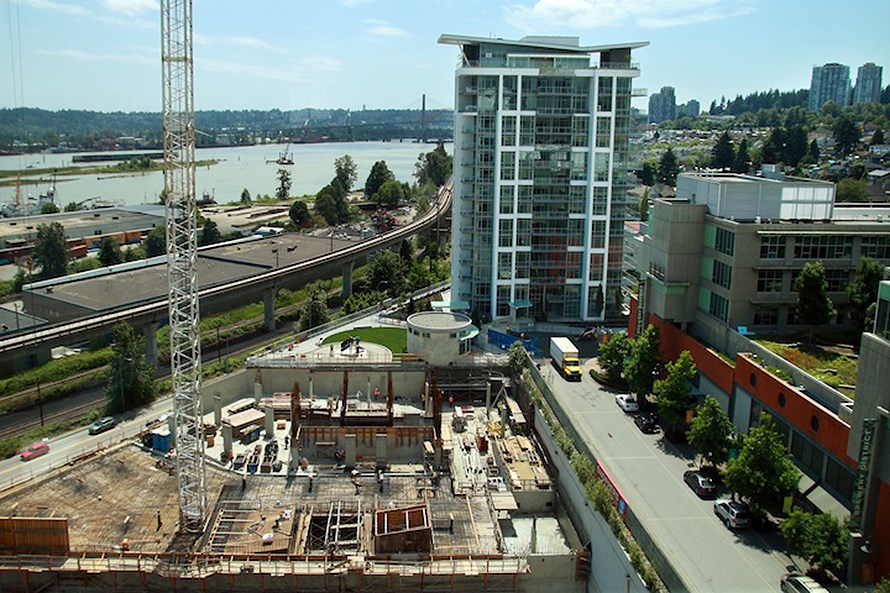Supply is said to be the solution to affordable housing in Metro Vancouver, with a developer group urging mass re-zoning of single-family neighbourhoods to accommodate higher-density residential.
“What’s causing the supply shortage is the restrictive single-family home neighborhood zoning on 85 per cent of our residential land base. That keeps out young families, middle income earners and renters, who can’t afford single-family homes,” said Anne McMullin, president and CEO of the Urban Development Institute, Pacific Region.
“We clearly need a regional housing strategy with more homes for more people,” she added. “That means more high-rise apartments along rapid transit corridors and more townhomes, rowhomes [and] multi-family low-rises.”
But recent studies show the reverse is true: fewer people can afford to buy condominiums in the Metro suburbs that have seen the greatest increase in supply over the past two years.
Spurred by the extension of rapid transit, Burnaby, Coquitlam, New Westminster and Surrey have seen explosive growth in strata projects, but they all share something else in common: as the residential towers ascend, housing affordability has eroded.
After record-breaking construction in 2016, Surrey had more multi-family housing starts– 2,390 and mostly condo apartments –in the first half of this year than in any other Metro Vancouver municipality, but condo affordability has fallen by 7.8 per cent compared to a year earlier, according to a survey by credit union Vancity.
The 2017 Vancity study compares the change in percentage of median household income required to cover the cost of buying a condominium apartment based on current prices.
Burnaby, which had the second-highest strata starts, has seen condominium affordability plunge nearly 10 per cent. In the Brentwood area where the most new condos are being built, the benchmark price of a resale condo is the highest – and least affordable – in Burnaby, at $747,400.
New Westminster has seen starts of multi-family units increase 54 per cent this year compared to 2016, according to Canada Mortgage and Housing Corp. (CMHC), but the ability of buyers to afford a condominium has fallen 18.4 per cent.
Coquitlam’s condo affordability has plunged 20.8 per cent this year, despite posting the third-highest number of multi-family starts in the region, up 35 per cent from 2016, to 941 units.
Port Coquitlam saw multi-family starts rocket up 741 per cent in the first half of 2017 compared to a year earlier, but condo affordability fell by 15.5 per cent , based on the Vancity data.
Meanwhile, developers are driving local residential land prices much higher
According to Colliers International, a “well-connected transit system” is spurring new condos, particularly in areas adjacent to existing town centre malls such as Brentwood and Lougheed, both of which are zoned for ultra-high-density housing.
Avison Young recently sold 8.3 acres near the Brentwood SkyTrain station for $155 million – the most expensive residential land transaction ever to occur in Burnaby.
In Port Moody, where the arrival of transit has boosted home construction, the typical condo apartment price is up 25.2 per cent from a year ago to more than $600,000, according to the Real Estate Board of Greater Vancouver. Once inexpensive, Port Moody is now the fifth-least affordable place to buy a condo in Metro Vancouver, according to Vancity.
“Historically, wherever we’ve seen rapid transit developed in Metro Vancouver, we’ve seen an increase in new development along the corridors and [in] particular around stations,” said Michael Ferreira, principal of Urban Analytics Inc. “The form of housing is going to be more affordable; a condominium will be more affordable than a single-family home.”
But, based on a comparison of starts and affordability, that condo affordability factor is waning fast even as the supply explodes.



